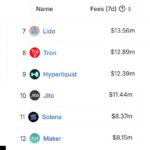The recent guidance issued by the U.S. Securities and Exchange Commission (SEC) regarding memecoins has sparked interest and debate within the cryptocurrency community. On February 27, 2023, the SEC’s Division of Corporate Finance clarified that memecoins—digital assets inspired by internet memes and trends—are typically not classified as securities. This marks a notable shift from previous regulatory efforts under former SEC Chair Gary Gensler, who aimed to extend the agency’s oversight over a broader range of digital assets.
The SEC’s interpretation hinges on the legal framework established by the “Howey test,” a precedent used to determine whether a transaction qualifies as an investment contract. Traditionally, this test requires an investment of money into a common enterprise with the expectation of profits from the efforts of others. However, the SEC’s new guidelines assert that memecoin purchasers are not involved in a pooling of funds and do not anticipate profits derived from the work of third parties, but rather engage in speculative trading akin to collectibles.
The statement from the SEC emphasizes that the value of memecoins derives from market sentiment and trading activity rather than from shared entrepreneurial efforts.
This shift in the SEC’s stance may have far-reaching consequences, not only for memecoins but also for the broader landscape of digital asset trading. The guidance suggests that transactions occurring on exchanges—where individual investments are not pooled—may similarly fall outside the SEC’s jurisdiction. This could mean a significant reduction in the regulatory pressure previously faced by many in the crypto space.
While the SEC’s guidance is categorized as representing the views of agency staff and lacks legal binding force, its implications are noteworthy. Some observers speculate that the agency’s willingness to reconsider its regulatory approach may lead to a more stable environment for trading digital assets in the U.S. As this situation develops, it indicates a potential easing of the regulatory scrutiny that has characterized the cryptocurrency industry in recent years.
Indeed, this announcement hints at a possible reevaluation of the SEC’s regulatory framework, focusing more on specific asset classes rather than imposing a blanket approach across the entire digital asset market.
Ultimately, this guidance not only clarifies the status of memecoins but may also influence the SEC’s future interactions with the wider cryptocurrency market, ushering in an era of greater clarity and understanding in this dynamic sector.

Understanding SEC’s Memecoin Guidance and Its Implications
The SEC’s recent memecoin guidance indicates a shift in regulatory focus regarding digital assets. Here are the key points surrounding this new guidance and how they might impact individuals and the broader crypto landscape:
- Definition of Memecoins:
Memecoins are digital assets inspired by internet trends, typically used to create online communities.
- Shift from Previous Regulatory Stance:
This guidance marks a departure from former SEC Chair Gary Gensler’s approach, which sought expansive regulatory control over the digital asset sector.
- Criteria for Investment Contracts:
- The SEC applies the “Howey test” to determine whether a transaction qualifies as an investment contract.
- Key elements include the pooling of investor funds and the expectation of profits from the efforts of others.
- No Common Enterprise for Memecoins:
The SEC states that memecoin purchases do not involve a common enterprise, meaning funds are not pooled for joint business ventures.
- Value Derived from Speculation:
Memecoins’ value is linked to market sentiment and speculative trading rather than any intrinsic profit-generating activity.
- Broader Implications for Digital Assets:
This guidance affects not only memecoins but could also apply to secondary-market transactions of other digital assets, potentially limiting the SEC’s jurisdiction.
- Legal Non-Binding Nature:
The guidance represents staff views, lacks legal force, and could be subject to future reinterpretation by the SEC.
- Impact on Private Litigation:
The guidance complicates private plaintiffs’ efforts to classify many digital assets as securities based on the pooling requirements.
- Shift Towards Clarity in Crypto Regulation:
The guidance signals a move toward clearer regulatory frameworks, helping reduce confusion surrounding crypto law in the U.S.
Understanding these points can help individuals navigate the evolving landscape of digital assets, especially those interested in investing or engaging in crypto-related activities. The SEC’s guidance may provide opportunities for clearer trading strategies and considerations for potential risks involved with memecoins and other cryptocurrencies.
SEC’s Memecoin Guidance: A Game-Changer in Crypto Regulation
The recent guidance issued by the SEC regarding memecoins marks a notable pivot in the regulatory landscape for digital assets. Unlike the prior enforcement-heavy strategy under former Chair Gary Gensler, this new stance may alleviate some burdens for creators and investors in the memecoin sector. While it primarily addresses memecoins, the implications could ripple through the entire digital asset market, offering both opportunities and challenges for various stakeholders.
Competitive Advantages: This shift from the SEC could provide a much-needed reprieve for memecoin developers and traders alike. By stipulating that these digital assets generally do not qualify as securities, innovators can explore new financial avenues without the fear of stringent regulations hampering their creativity. This is a significant advantage for platforms focusing on memecoins, as they can promote their offerings with less risk of SEC scrutiny. Furthermore, investors in this space may find greater confidence to engage, knowing they are less likely to be dealing with securities that could be subject to complex legal frameworks.
Moreover, the clarity provided by the SEC’s guidance may attract more participants into the memecoin arena, sparking enthusiasm and investment in a previously speculative and murky landscape. With the recognition that speculative trading drives the value of memecoins, it could establish a new norm surrounding digital asset valuation based on community sentiment, reminiscent of traditional collectibles.
Potential Disadvantages: However, this regulatory leniency does have its downsides. With the SEC signaling a retreat from aggressive enforcement, there is concern that it may embolden bad actors within the memecoin market. Investors, especially new entrants, may rush in without adequately understanding the risks, leading to potential financial losses and market volatility. Furthermore, the ambiguity surrounding the guidance’s application could serve as fertile ground for litigation; investors who feel wronged may still seek redress in courts, complicating the regulatory landscape even further.
Also, while the guidance facilitates a clearer path for memecoins, it remains to be seen how it will affect their derivatives and other related digital assets that do not fit neatly into this defined category. This could potentially leave a loophole for one-off scams or poorly defined cryptocurrency offerings to slip through the cracks of regulation.
Who Benefits and Who Faces Challenges? The primary beneficiaries of the SEC’s new guidance are likely developers and traders within the memecoin ecosystem. Platforms that cater specifically to memecoin transactions may experience a surge in user engagement and investment. Conversely, traditional cryptocurrency exchanges that handle a broader array of digital assets may face challenges in adapting to a regulatory environment that protects some while potentially complicating others.
Furthermore, this development could create a ripple effect on advocacy groups pushing for further clarity in crypto regulations. Those urging for a more harmonized approach to the digital asset industry may find it increasingly difficult to make their case if the SEC continues to provide targeted exemptions or varied guidance. In a sector that thrives on innovation, the SEC’s nuanced approach to memecoins could encourage businesses to rethink their compliance strategies, leading to either inventive solutions or further regulatory confusion down the line.

















